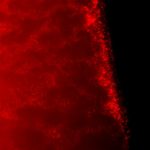Lien vers Pubmed [PMID] – 23475488
Postepy Hig Med Dosw (Online) 2013 Mar;67:119-29
For overproduction of recombinant proteins both eukaryotic and prokaryotic expression systems are used. Choosing the right system depends, among other things, on the growth rate and culture of host cells, level of the target gene expression and posttranslational processing of the synthesized protein. Regardless of the type of expression system, its basic elements are the vector and the expression host. The most widely used system for protein overproduction, both on a laboratory and industrial scale, is the prokaryotic system. This system is based primarily on the bacteria E. coli, although increasingly often Bacillus species are used. The prokaryotic system allows one to obtain large quantities of recombinant proteins in a short time. A simple and inexpensive bacterial cell culture and well-known mechanisms of transcription and translation facilitate the use of these microorganisms. The simplicity of genetic modifications and the availability of many bacterial mutants are additional advantages of the prokaryotic system. In this article we characterize the structural elements of prokaryotic expression vectors. Also strategies for preparation of the target protein gene that increase productivity, facilitate detection and purification of recombinant protein and provide its activity are discussed. Bacterial strains often used as host cells in expression systems as well as the potential location of heterologous proteins are characterized. Knowledge of the basic elements of the prokaryotic expression system allows for production of biologically active proteins in a short time and in satisfactory quantities.

